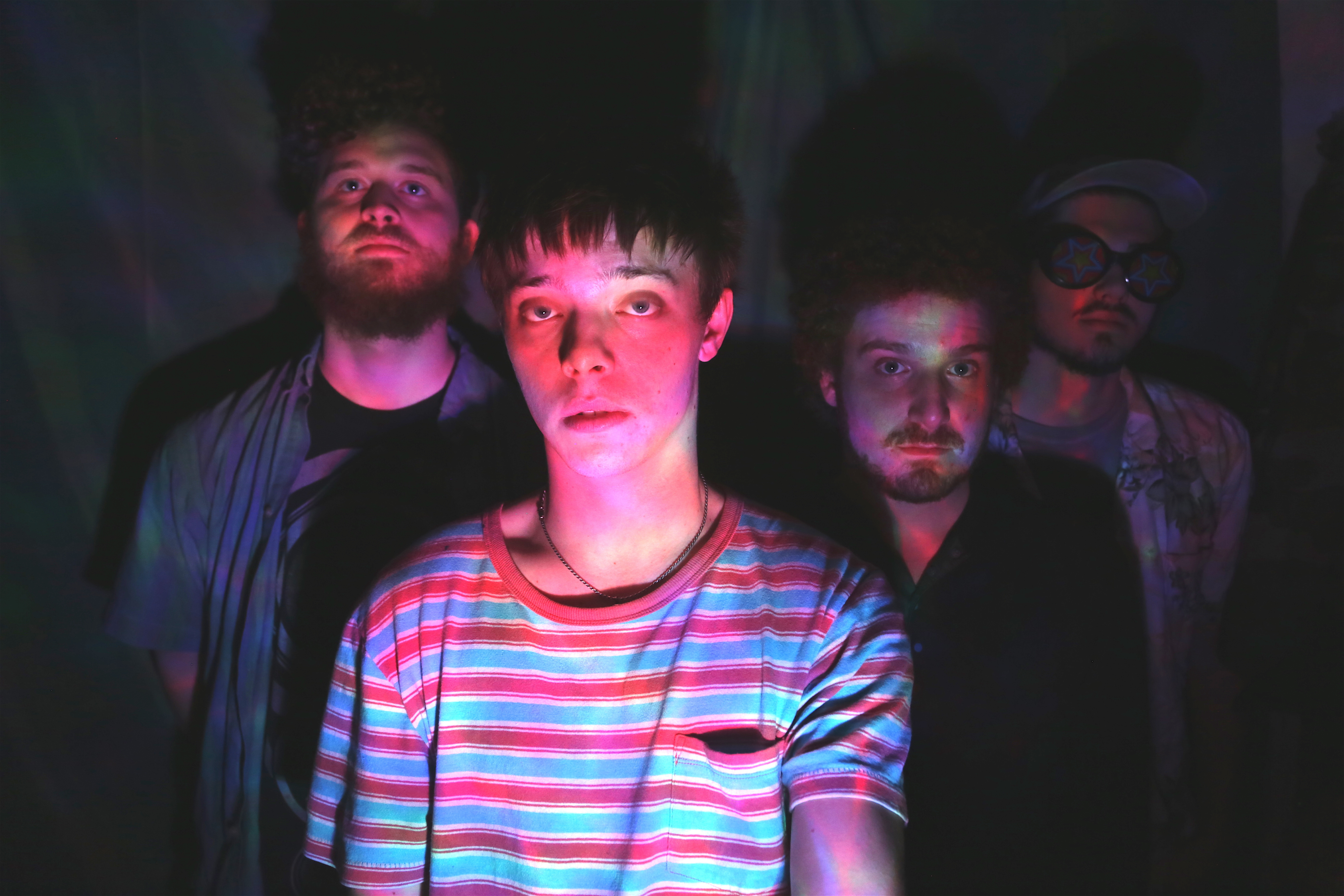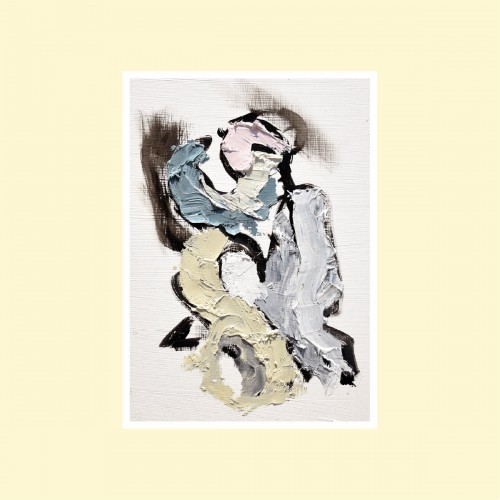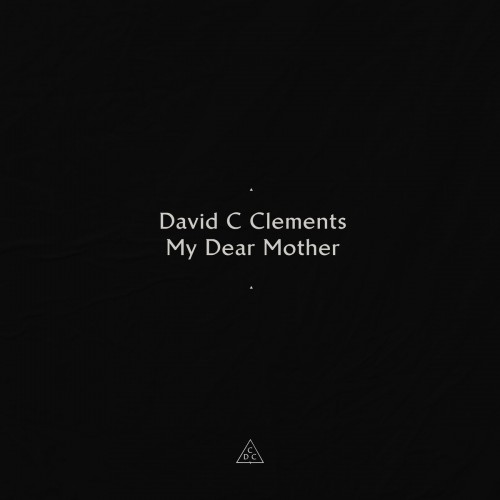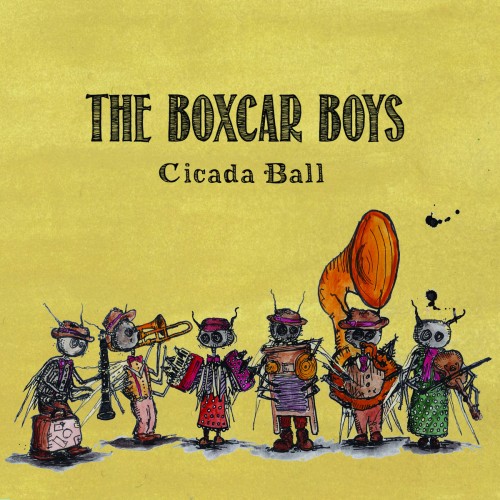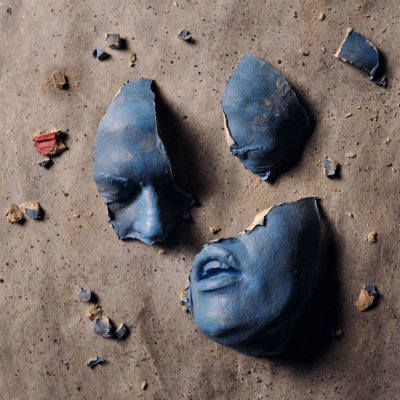It’s a simple yet sublime pleasure, and just thinking about it can make you feel a little calmer, a little more content. Imagine: You bring out one of the good rocks glasses (or your favorite mug or a special occasion tea cup) and pour a couple fingers of amber liquid (or something dark and strong or just some whole milk). You drop the needle on the jazz platter (or pull up a blues album on your mp3 player or dig out that mixtape from college). Ensconcing yourself in the coziest seat in the house, you crack the spine on a classic (or find your place in that sci-fi paperback or pull up a biography on your e-book reader). And then, you go away for a while. Ah, bliss.
In this series, some of NTSIB’s friends share beloved albums, books and drinks to recommend or inspire.
Oiseaux-Tempête, more or less of Paris, are an ever-changing entity. An iteration of the band that includes Frédéric D. Oberland and Stéphane Pigneul (FareWell Poetry and Le Réveil des Tropiques), Ben McConnell (Beach House, FareWell Poetry, Marissa Nadler) and bass clarinet virtuoso Gareth Davis (Elliott Sharp and Robin Rimbaud (aka Scanner)) have just released ÜTOPIYA?, the follow-up to their first, self-titled record.
In Oiseaux-Tempête, the band ventured to Greece to capture the sounds of political upheaval – not protest songs, but the ambient noises, and the sense of menace, the feeling of frustration, boiling over. For ÃœTOPIYA? they visited Sicily and Istanbul. The result is a complex and compelling work that mixes jazz elements with bright electronic tones, aggressive, dissonant feedback and the sense that even during seismic change, sometimes people do sit outside and listen to nightbirds singing.
As a taste, here is Omen: Divided We Fall:
And with that, I will turn the floor over to the band, who are joining us today – all four of them, a very special treat – to share a favorite book, record and drink.
Â

OISEAUX-TEMPÊTE, 2015; photo by Pamela Maddaleno
A GOOD READ
Â
FRÉDÉRIC D. OBERLAND: Guy Debord, Oeuvres Cinématographiques Complètes / Complete Cinematic Works. This book came into my hands late 90’s when it was almost impossible to find any of Guy Debord’s films to watch. The goal was fascinating: trying to understand and to enjoy these stunning film-essays just with the film scripts, without the actual image or sound. The narration is transcribed and you can find between the lines an informative depiction of what is happening on the screen and in the speakers. Reading the hopeful melancholy of In Girum Imus Nocte Et Consumimur Igni, I feel this just as much in my bones as in my mind: poetry and social revolution could be so easily related. Both are coming from the same vibrant, primal, essential breath.
STÉPHANE PIGNEUL: Héros-Limite from Ghérasim Luca. I’ve always thought that the best poets are the ones who write in a language different from their mother tongue. Luca as Cioran, is Romanian and was a kind of surrealist despite the fact he was never affiliated to the actual. Although he mastered the French language, he tweaked it in a new way, made to be spoken more than read, in a very musical way. The love for the words, the language, and of course with his famous sense of humour can be felt in every text he wrote. His poems are an excellent source of inspiration for those who want to write too, and be off the beaten track.
GARETH DAVIS: Bohumil Hrabal’s Too Loud A Solitude. I picked this up in Prague the first time I was there. There was an English language bookshop that was a fair walk from where I was staying, but it had the distinct advantage of being one of the few places to accept cards (at that time), a deciding factor as I was leaving on a train that evening to Budapest and had judged my cash supply in koruna down to the last bottle of water before departure. So I trekked over to the shop and picked up what was essentially a random pile of books for the train journeys ahead.
I’m guessing I must have read this five or six times over the following three or so weeks. Without giving too much away, it’s the story of man working 35 years compacting wastepaper and books, a process which has lead him to acquire an education so unwitting he’s unable to tell which thoughts are his own and which come from the books he has rescued from the hydraulic press. It is a novel of such incredible extremes, comedy, pathos, sophistication, sex and violence. An observance of sorts of the indestructibility of the written word.
BEN MCCONNELL: Paul Bowles’ masterpiece, The Sheltering Sky, is a powerful and eerie novel which traces the wanderings of three Americans throughout Morocco and the Sahara Desert following the end of WWII. A sense of unease, or even dread, permeates these characters as they journey deeper and deeper into the vast expanse of the Sahara, tirelessly searching for a sense of meaning or purpose in their lives in a desperate attempt to escape the stifling conventions and stale consumerism of western society.
Plagued by blinding sun, sickness, and thieves, all does not end well for these three; and it could be the ending itself which is this novel’s crowning achievement, taking an unexpected and horrific turn into an even further unknown, more treacherous then they – or us – could have ever imagined.
A GOOD LISTEN
Â
FRÉDÉRIC D. OBERLAND: My instant choice could have been the boxset Claire Denis Film Scores 1996-2009 (Constellation, 2012) from Tindersticks.  Five LPs to listen to and to enjoy the way you want when you’re feeling moody. But this Kime Ne’ 12″ (Aboov Plak, 2013) I discovered last summer in Istanbul is a hidden masterpiece to dance to and to make love under the rain. The project is called iNSALAR and includes Cem Yıldız (on vocals, baÄŸlama and electronics), Barış K (on electronics) and Hogır (on percussion and vocal percussion). The lyrics are adapted from poems by 17th century Turkish poet musician Kul Nesimi (Ben Melamet Hirkasini) and 16th century icon Pir Sultan Abdal (Otme Bulbul). Play it loud and look at the way you’re shaking the head. Yes, Side A and B are exactly the same, and now you know why.
STÉPHANE PIGNEUL: Carnage Visors: The Cure. My choice at the moment if you ask, in part because I just borrowed the fantastic drum machine DR-55 from a friend, and that track was written with it. It’s the longest track Smith ever put on tape, something like 28 minutes, instrumental, minimal, a bit dark but super warm in the sound. Also the structure is something really smart, just as Smith always does with guitars. He composed it on bass, starting the harmony in E going through A and D then finishing in G, which are the open strings of a bass . . . A super intelligent approach, indeed.
It was proposed for a 30 minutes stop motion film the brother of the bass player did, and was projected before the 1981-shows they used to do. Only 30 seconds of this film can be found on the internet, kind of mysterious, after all these years and the power of the web . . . A kind of myth in The Cure sphere! Again, a super source of inspiration for those who want to make music. At least it has worked for me since I’m 15 . . . !
GARETH DAVIS: Erewhon, the debut record from David Thomas and the Two Pale Boys (Cooking Vinyl, 1996). In the 90s in London the choices for TV were, in most cases, still either four channels or a satellite dish. And then came cable. The introduction was a somewhat sporadic affair, and how many extra channels this meant become immediately available, I don’t remember. Only two have stuck in my mind from the first batch. One that was called Bravo on which I watched 1930s episodes of Flash Gordon with my father, and the other, MTV, back when they still actually played music.
There was a show called Alternative Nation on Sunday evenings and somewhere between the Tindersticks and a feature on The Crow soundtrack came this David Thomas live set. It must have taken around two months to track down the CD, a job made considerably more difficult as I’d not quite heard the name properly and didn’t know what the album was called. After 20 years I’m still constantly going back to this album. For anyone acquainted with Pere Ubu, it’s not going to be all that surprising a piece of work, but there’s also something, I think, a little different. A kind of urgency, unsurprising as there’s a lot of improvisation, yet at the same time somehow managing to remain decidedly laid back. There’s a live album which was part of the Monster (Cooking Vinyl, 1997) box set, alas not available when it was reissued in 2004. Absolutely excellent material if it’s possible to find, and definitely worth the trouble to look for.
BEN MCCONNELL: Orchestre Régional de Kayes, The Best of The First Biennale of Arts and Culture For The Young (1970). I discovered this amazing gem through a limited repressing by Mississippi Records a few years back, which was later yanked from the shelves following a legal dispute with the band itself (apparently they had not been notified of its reissue). But in any case, from what I know of this recording, it comes from northern Mali, near the Senagalese border, where every year, or every two years, a type of battle-of-the-bands would occur, and this particular recording came about after the groups’ victory. It also happens to be their only recording, and has never been properly reissued on cd or vinyl, although thankfully it can be found as as a download online.
I played this for Jimmy Page one evening, and he came back to see me then next day to ask me what the name of the group was – he’d been thinking of the guitar solo in Sanjina ever since. And the guitar solo in Sanjina is a perfect example of why I chose this album to accompany the above novel: the syncopated rhythms and crisp guitar tones, to my ears, depict the feeling of the African desert at night, and even sometimes, in a moment of near synesthesia, seem to resemble the silvery shimmering of stars upon the infinite night sky.
Â
A GOOD DRINK
Â
FRÉDÉRIC D. OBERLAND: Michel Couvreur, 12 Year Overaged Malt. Some French whisky, sorry guys! Since 1978 Michel Couvreur imports Scotch whiskies to his facilities in Burgundy, France, where they undergo a slow aging process in Spanish sherry, French burgundy or vin jaune dedicated casks. A dry, smoky and slightly sweet spirit, aromas of almond, tobacco, a generous and spicy palate which apparently remains in the old Victorian whiskies.  A friend of mine first offered me a bottle of this rare elixir 15 years ago – did I say the design of the bottle itself hand-sealed with wax and with the label placed around the corner of the square is exquisite? In a quasi-religious way, I kept this first bottle three years in a secret place, tasting only three sips of this Malt with a 99% dark chocolate square. Now I’m more mature and I love to share it. Sometimes!
Â
STÉPHANE PIGNEUL: Un Réveil des Tropiques: a cocktail I created or maybe stole ! As a barman, I used to sell a lot of drinks in the bar. We have this other project with Frédéric and the DR-55 guy – Ad – called Le Réveil des Tropiques. It’s the cocktail I offered the most. Basically, it’s a mojito in which you replace the sparkling water with ginger and brown sugar! Half a glass of rum and mint, lime and the secret ginger, that you have to squeeze yourself of course. Really explosive one, tasty , once you tried it, you want an another one, and another one, and another one and . . .
GARETH DAVIS: I’ve got a thing about coffee. More precisely, espresso. Addiction would be another way of putting it, but perhaps calling it a thing and proving I’m in denial is the way to go. Frédéric told me I drunk all his coffee last time I was in Paris. I was looking for someone else to blame, but it’s not working, so I’ll probably need just bite the bullet and accept it.
Narrowing it down to one particular bean or roast I can’t do, particularly as there seem to be new roasters every other week, but I have noticed there there are a few blends I keep coming back to. Hair Bender from Stumptown seems to get on well with my machine, a rather temperamental lever action Pavoni, although it could just be that I like the name. Ed from Caffènation is another blend I’ve been using a fair bit recently and, to be honest, also the dark roast from my local supermarket which I’m probably not meant to admit out loud, but it’s really pretty good, so I can live with that.
BEN MCCONNELL: In The Sheltering Sky, a story is told of three sisters who journey to the Sahara, following their dream of having tea together while overlooking the sea of dunes, and vaguely hoping to find the handsome and mysterious stranger who had once visited the sisters’ village and made love to all three of them. The sisters join a caravan which bivouacs under the full moon, then sneak out from camp to find the highest dune from which to have their tea.Â
The sisters reach the highest, then see another, higher, in the distance; then another, higher; and wander on continually until they collapse from exhaustion and are later discovered where they lay, atop a dune, their glasses filled with sand.Â
Sting wrote the lyrics to Tea In The Sahara based on this episode. And if I were to recommend a painting to round out this presentation, it would be Henri Rousseau’s la Bohémienne Endormie (or, Sleeping Gypsy) …Â
But, I digress, here is the recipe for making Moroccan Mint Tea:Â
1 tablespoon gunpowder green tea leaves
1 large handful fresh Moroccan mint, or spearmint leaves, washed
1/2 liter (about 2 cups) boiling water
1/4 cup sugar
Boil at least a liter of water. Rinse a small tea pot with about 1/4 cup of the water.
Add the tea leaves and another 1/4 cup boiling water. Swirl the pot to wash and rinse the leaves, and pour out the water.
Add the mint leaves and the sugar, and fill the pot with 1/2 liter (about 2 cups) boiling water. Leave the tea to steep for five minutes or longer, or set the tea pot over medium-low heat and bring the tea to a simmer. Remove from the heat, and allow to steep several minutes more.
Gently stir the tea, pour into small tea glasses and serve. It might be worth adding that Moroccans take pride in pouring their tea from a significant height, which aside from being visually impressive, serves to aerate the tea and heighten the flavor. Â
Â




